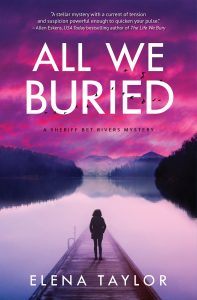Show vs Tell: What are agents and editors referring to with this “issue” in a manuscript?
In my humble opinion . . .
Show vs Tell can also be understood by thinking about active vs passive writing or writing with the reader and writing at the reader. Here’s what I mean by those three things.
Show vs Tell
 On a very basic level, to show a reader something is to provide all the information a reader needs to understand a description or event. To tell a reader something is to spell out the description or event.
On a very basic level, to show a reader something is to provide all the information a reader needs to understand a description or event. To tell a reader something is to spell out the description or event.
For example:
Tell: She was angry.
Show: She threw the pot at his head.
In the first example, I state in no uncertain terms the character’s emotional state. In the second, I don’t state she’s angry, but I have provided enough information for the writer to infer her emotional state.
That’s the most basic level of show vs tell.
Active vs Passive Writing

Another way to think about Show vs Tell is Active vs Passive Writing.
This is a more complex way to think about the concept, but I think it’s useful to come at most things from more than one direction.
Active writing requires the reader to do some of the work to understand the situation, description, or action. Passive writing requires nothing of the reader outside following the narrative.
In other words, if a reader knows that a woman has bruises and flinches when her husband slams the door as he comes home, the reader can infer that he’s abusive, but it requires that they extrapolate that from the material. If, however, the writer states: he was an abusive husband, the reader isn’t required to deduce the situation, it’s spelled out.
Writing with the Reader vs Writing at the Reader
 The third way I want to define Show vs Tell is the concept of Writing with the Reader and Writing at the Reader.
The third way I want to define Show vs Tell is the concept of Writing with the Reader and Writing at the Reader.
This is the most nuanced way of thinking about Show vs. Tell.
To write with the reader means that the author is walking alongside the reader as they move through the material. The writer provides the context and the world of the narrative, but the reader must work with the writer to understand all the subtleties and meaning in the story.
Writing at the Reader means the reader has all the information laid out in front of them and isn’t engaging in a “dialogue” with the writer to understand the events.
Writing with the Reader defines those moments when the thoughts of the writer and the thoughts of the reader are working together to create meaning.
When to Show and When to Tell
That leads to the question, when do we need to show and when do we need to tell?
On the most basic level, active scenes are show, transitions are tell.
On a more complex level, show and tell work hand-in-hand to move the reader seamlessly through the narrative with enough signposts to make the journey clear, but enough active writing to keep the reader engaged.
On a more nuanced level, show and tell makes reading a book a shared experience, where the reader integrates the concepts of the writer as if they are on the journey with them.
Manuscripts need both Show and Tell, woven together to create an engaging, dynamic, and thought-provoking narrative.
Want to learn more about Elena’s thoughts on writing? Check out her free, livestream, Wednesday morning (9am PT) Writing Workshops, by clicking the link here.
 Elena Taylor is the author of All We Buried, available now in print, e-book, and audio book format at all your favorite on-line retailers. And don’t forget many independent bookstores can order books for you and have them shipped to your home or for curbside pickup.
Elena Taylor is the author of All We Buried, available now in print, e-book, and audio book format at all your favorite on-line retailers. And don’t forget many independent bookstores can order books for you and have them shipped to your home or for curbside pickup.
For more information on All We Buried, click on the link here to visit the home page.
Camera image by mohamed_hassan on Pixabay
Blank page image by geralt on Pixabay.
Swordsman photo by sasint on Pixabay.

